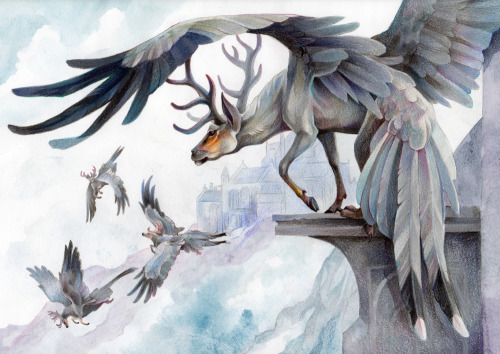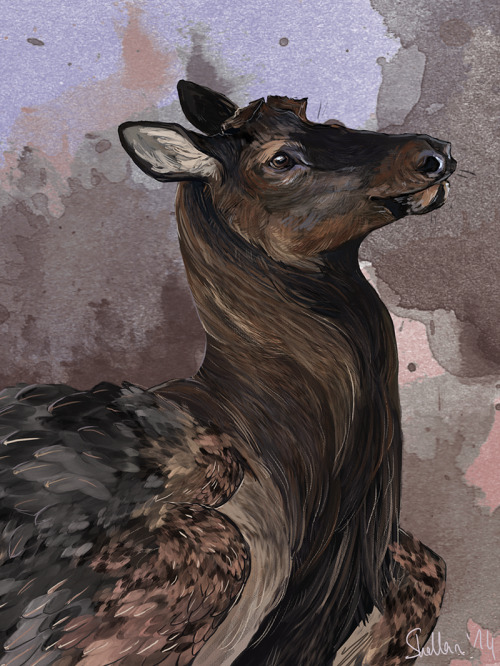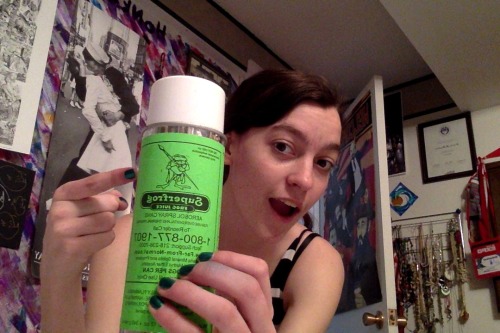Not Even Half A Day After The Ceasefire, Armed Israeli Soldiers Are Once Again Shooting Rubber-coated
Not even half a day after the ceasefire, armed Israeli soldiers are once again shooting rubber-coated metal bullets and throwing stun grenades at unarmed Palestinian civilians in Al Aqsa mosque while they were praying, just like they have been doing to the worshippers there multiple times these past 2 months.
Source: X
More Posts from Solarpiracy and Others
So, reports of an unprecedented egg “shortage” are exaggerated. Nonetheless, egg prices — and egg company profits — have gone through the roof. Cal-Maine Foods — the largest egg producer and the only one that publishes its financial data as a publicly traded company — has been making more money than ever. It’s annual gross profits in the past three years have floated between 3 and 6 times what it used to earn before the avian flu epidemic started — breaking $1 billion for the first time in the company’s history. All of this extra profit is coming from higher selling prices, which have been earning Cal-Maine unprecedented 50-170 percent margins over farm production costs per dozen. Taking Cal-Maine as the “bellwether” for the industry’s largest firms — as people in the egg business do — we can be pretty confident that the other large egg producers are also raking in profits off the relatively small dip in egg production.
High persistent profits are an anomaly for the industry. Historically, egg producers have responded to avian flu epidemics—and the temporary rise in egg prices that often accompanies them—by quickly rebuilding and expanding their flocks of egg-laying hens. “Fowl plagues”—as these epidemics used to be called—have been with us since at least the 19th century. Most recently, large-scale avian flu epidemics hit egg farms in 2015 and 1983-1984. The egg industry responded to both of these destructive events by sprinting to rebuild and expand the egg-laying hen flock — something which checked price increases and ultimately made sure prices went back to pre-epidemic levels within a reasonable time.
As Cal-Maine Foods explained in its 2007 Annual Report: “In the past, during periods of high profitability, shell egg producers have tended to increase the number of layers in production with a resulting increase in the supply of shell eggs, which generally has caused a drop in shell egg prices until supply and demand return to balance.”
This time around, however, that’s not happening. Despite high profits, the egg industry has somehow maintained a stubborn deficit in egg production capacity. Hatcheries — the firms that supply hens to egg producers — have throttled the pipeline of hens instead of expanding it. According to the Egg Industry Center, the size of the flock of “parent” hens — the hens used by hatcheries to produce layer chicks for egg producers — plummeted from 3.1 million hens in 2021, to 2.9 million in 2022, to 2.5 million hens in 2023 and 2024.
Meanwhile, hatcheries have been hatching significantly fewer parent chicks to replace aging ones — nearly 380,000 (or 12 percent) fewer in 2022 compared to the year before, and even fewer parent chicks in 2023 and 2024 — leaving the parent flock older and more likely to produce eggs that fail to hatch. That could explain why, although hatcheries reported producing 125-200 million more fertilized eggs to the USDA in each of the last three years compared to 2021, the number of eggs they’ve placed in incubators and the number of chicks they’ve hatched from those eggs has either declined or stayed basically steady with 2021 levels in every year since.
As for egg producers themselves, you may be surprised to learn that they have added between 5 and 20 million fewer pullets to their farms in every one of the last three years than they did in 2021. As the USDA observed with some astonishment at the end of 2022, “producers—despite the record-high wholesale price [of eggs]—are taking a cautious approach to expanding production[.]” The following month, it pared down its table-egg production forecast for the entirety of 2023 on account of “the industry’s [persisting] cautious approach to expanding production.”
In other words, the only thing that the egg industry seems to have expanded in response to the avian flu epidemic is windfall profits — which have likely amounted to more than $15 billion since the epidemic began (judging by the increase in the value of annual egg production since 2022), and appear to have been spent primarily on stock buybacks, dividends, and acquisitions of rivals instead of rebuilding and expanding flocks. When an industry starts profiting more from *not* producing than from producing, it’s a sign that something isn’t right. It could be an innocent bottleneck. But when it lasts for three years on end with no relief in sight, it's usually a sign of something else that’s pervasive in America — monopolization.
As the coming installments in this series will detail, the fundamental problem in the egg supply chain today is the simple fact that every industry involved in turning an egg into a chicken and turning a chicken into an egg—from the breeders and hatcheries that create the hens to the producers who use the hens to make eggs—has been hijacked by one or two financier-backed corporations, with the incentives flipped from competing entities seeking to produce more eggs to an oligopoly trying to restrain the production of eggs.
On one end of the egg supply chain, you have two companies who control chicken genetics, the billionaire-owned Erich Wesjohann Group and the private-equity-backed Hendrix Genetics. Headquartered a short car trip apart in Cuxhaven, Germany, and Boxmeer, Netherlands, these private firms have systematically gained control over the supply of egg-laying hens to American producers over the past two decades by buying out or suppressing rivals and challengers. Today, no egg producer in this country can expand the number of hens in its flock — or even replace the hens it already has when they age out or die — without the cooperation of this duopoly. And, since the value of hens rises with the price of the eggs, when the price of eggs is high these two barons have a clear interest in keeping the supply of pullets to producers on a tight leash — so the high prices stick.
On the other end of the egg supply chain, you have the largest egg producer in the country and the world, Cal-Maine Foods.
Matt Stoller from his monopolisation/cartel report; something that has clicked recently is the way that business seeks to maximise profit margin over volume, which often leads to reducing production, brittle supply chains, high prices, and ultimately shortages.
in principle this isn't supposed to happen under capitalism, because someone earning high profit margins should be outcompeted by new entrants willing to earn slightly lower profit margins, until (in the perfect frictionless market) the rate of profit should be whittled down to the rate of risk free return (government interest rates?) plus epsilon (a little bit).
obviously this does happen in reality for a number of reasons, and the Problem of Profits is a fun question to dig into, but the problem of persistently high profits is a more concerning issue and appears to be growing across multiple industries.
antitrust law is supposed to prevent market concentration that leads to this outcome but has been toothless since the '90s, allowing dramatic consolidation across dozens of old industries (groceries, agriculture, pharmacies, television, newspapers) and of course new industries (tech giants).
government regulation often ends up favouring incumbents, but it seems that contractual arrangements between suppliers and industry bodies and buying agents to form tight cartels are a bigger problem: if egg prices are high you might think to start an egg farm, but you need to find someone who will sell you chickens and someone who will buy your eggs, when the industry is using every means at their disposal to cut off market access to new entrants.
and of course if you have access to the gargantuan amount of capital required to attempt a serious challenge to an established cartel, why exactly would you want to start a price war with them when you can instead find some other unprotected industry to buy up and establish a cartel of your own?
capitalism seems to have entered a phase of its development equivalent to WWI, where defensive operations by incumbents are more successful than offense by new ventures, keeping the battle lines frozen in place (presumably the soldiers dying in their millions would be workers and consumers in this analogy).
reference masterpost!
most things will be under the readmore
movies:
walt disney movies
harry potter movies
a movie list
oscar movies
more movies
studio ghibli
marvel movies
spooky movies
more spooky movies
not so scary Halloween movies
more movies
movies to watch when feeling down
so much movies
Read More
How To Shop For Fabric Online
RIP Joann's. Now many places in the US no longer have a local fabric store, such as it even was toward the end.
There are some good posts going around about where to shop for fabric and craft supplies online, like this one for example. But if you're a beginner-to-intermediate sewist, and the way you've always shopped for fabric is by going to the store and touching it, it can be a hard, even cruel adjustment to suddenly be looking at a photo online and trying to piece together from the inconsistent descriptions what you're actually looking at.
So I'm going to just try to bang together a little primer on What Things Are Called, and how to educate yourself, so that you don't have to do what I did and just buy a ton of inappropriate stuff you wound up not being able to use for what you'd thought. And I will link to some resources that will help with this. This will be garment-sewing-centric but will, I think, be fairly broadly applicable.
The first thing is to look carefully at your desired project. If it is a commercial pattern, it will usually tell you what kind of fabric you need, but it will describe it in not the same words it's often sold under. If it is NOT a commercial pattern and you're kind of winging it, it's even harder. So here is how to start figuring out what you need.
Number one: Knit or Woven?
Quilting fabric is woven. If you are making a quilt, you want a woven. Most craft projects are made with woven fabric-- tote bags, upholstery, you name it.
Many garments are knits. T-shirts, yoga pants, cardigans. It is easy to know, because knits stretch. They can either stretch both ways (along the length and along the width) or just one way (usually along the width); this is confusingly either called 2-way stretch or 4-way stretch. Yes, stores are inconsistent. Look carefully at the description, and they will usually specify-- "along the grain" or "in all directions". Some garments require stretch only around the body-- maxi skirts, knit dresses etc-- while some absolutely need stretch both ways, like bathing suits.
No, you absolutely cannot clone your favorite knit t-shirt in quilting cotton. It will not fit. Most knit garments have "negative ease", meaning they are smaller than your body and stretch to fit. All woven garments have "positive ease", meaning they are larger than your body, unless very firm shaping undergarments are used.
SMALL EXCEPTION: There exist "stretch wovens", which are woven fabrics made with elastic fibers. These will be labeled as such. They are actually harder to sew with than regular wovens because they almost never have their stretch percentage labeled; they are NOT suitable for knit patterns. Avoid them, until you are more advanced and know how to accomodate them, is my advice!
Number two: WEIGHT.
How heavy is the fabric? How thick? How thin? This is measured in two main ways-- ounces per yard (denim is often 8oz, 10 oz, 12 oz) or grams per square meter. But many fabric retailers do not tell you a weight, they use words like "bottomweight" or "dress-weight", and you have to learn to figure out what they mean by that.
My lifehack for learning these has been go to go to ready-to-wear clothing retailers and see if they give the weights of the fabric their garments are made from. (Yes, I learned how to shop for clothes online instead of in-store years ago, because I am fat; some of us have had to do this a long time.)
If you are making a pair of trousers, you need heavier fabric than if you are making a blouse. Do not buy a floaty translucent chiffon to make your work trousers, it will not work no matter how cute the color is. Learn how the different weights of fabric are described, and you will improve your odds of finding what you need.
Number three: DRAPE.
Is it stiff? Is it fluid? Is it soft? is it firm? There are a lot of very artsy words used for this, and you may find yourself puzzling over things with a fluid hand, or a dry, crisp hand, or "a lot of drape", or maybe the listing doesn't describe it at all. This segues neatly into another technical thing, which is the WEAVE of the fabric. There is a dizzying array of words that tell you what kind of fabric it is-- twill, tabby, challis, chiffon, crepe, organza, georgette. And these will give you insight into the drape, and thus into the texture/usability of this fabric, and how suitable it may or may not be for your project.
I know it's a lot to think about but I am now going to give you resources for where to see all this stuff.
Number one is Mood Fabrics, which I can't believe hasn't been in any of the posts I've seen so far. They are a huge store in NYC's Fashion District and yes you can go there, but when I went there it overwhelmed me so much I left empty-handed. But what they have is AN INCREDIBLE WEBSITE. They have everything on there, and what's most important for you, their listings are INCREDIBLY consistent. They have VIDEOS of many of the fabrics, where a sales associate will hold it, wave it, stretch it, and tell you verbally what it is and what it's for, in about thirty seconds. HUNDREDS of these videos.
Whether you want to buy from them or not, go to Mood Fabrics, click around, find their listings, and read them. They will tell you fabric content, weight (usually gsm), often weave, they have little graphics that show you if it's for pants, dresses, shirts. And they have those videos. Look at the listings, watch the videos, and you will leave knowing a lot more about how to look at an online listing of fabric and know what you're getting.
Another really excellent website for this is Stonemountain & Daughter. I've actually not bought anything from them yet (they came highly recommended, but they're not cheap), but their online listings are, again, very thorough and very detailed. They always have a picture of the fabric with a fold in it held in place by a pin, which does more to help you understand the weight and drape of a fabric than any other static image ever could-- that visual, combined with how informative the listings are, has helped me learn to estimate fabric weights on other sites very effectively.
And here is a page that's ostensibly about how to wash silk, but I found it so useful because it gives such a clear image of what each weave/type of silk fabric looks and drapes like. I've never bought anything from these guys either, but this is a good resource.
Learn a little bit about fabric so you know what you're looking for, and you can begin to replace some of that "i just have to go and feel it in person" problem. There will still be trial and error, but you'll have a better starting place at least.




The peryton is a mythological creature resembling a deer with the wings and overall plumage of a bird. Sometimes perytons can have bird-like hind legs, but are often depicted as being entirely deer aside from the wings. Last image created by the talented Skallan of Deviantart.
It’s hopeful. Solarpunk doesn’t require an apocalypse. It’s a world in which humans haven’t destroyed ourselves and our environment, where we’ve pulled back just in time to stop the slow destruction of our planet. We’ve learned to use science wisely, for the betterment of ourselves and our…
Someone asked for stuff to read about anarchism and where to get started really doing something. I don’t think they’d want their username posted publicly so here is my answer without the question attached:
For something to read about Anarchism, the book that’s always at the top of my list is Anarchy Works by Peter Gelderloos. It’s online for free here: https://theanarchistlibrary.org/library/peter-gelderloos-anarchy-works/
As for how to get started, probably the best first step is to find people who are already doing something and ask if they need help. Maybe there’s a local Mutual Aid Group, a soup kitchen, a group organizing protests? Don’t expect to or try to quickly do high-risk high-impact stuff with strangers. That kind of thing takes trust, getting to know each other and learning some basics about how to keep yourself and others safe.
If there’s no people near you or if the people near you are not people you wanna work with, the second best thing is to find at least one other person you can get along with who also wants to actually do something. Then talk about what you could do together and put some of it into action. Again, try small low-risk things first, get to know each other, learn together, and gradually move to more ambitious plans. Check out 30 Antifa Actions for inspiration: https://antifainternational.tumblr.com/post/175437159827/30-antifa-actions
Finally: try to hang on to your privacy, even during low risk actions. If you’re helping in a soup kitchen, it’s tempting to share your full name, pose for a picture on their facebook, tell people where you live, talk about it on your real-name social media account… & if you only ever wanna work in a soup kitchen, you can do all that. But if you think there’s a chance you’ll want to move on to some higher risk actions, it’s a good idea to enter the community under a nickname, to keep your face offline and to not talk about activism on social media accounts connected to your real name. Keeping a low profile can be a great asset later on.

Ok cosplayers, it has come to my attention that a lot of you don’t know what this stuff is. Sit down and let me learn you a thing. This stuff here is called Frog Juice (there’s no real frogs in it). It’s originally for stuff like vinyl signs (my dad owns a sign company, so I grew up with this stuff), but it’s even more useful for a wide range of cosplay stuff.
Since it’s designed to protect outdoor vinyl signs, it can do a whole hell of a lot. It dries super fast (three minutes until it isn’t tacky) and shiny, so it’s perfect for anything that’s supposed to look like metal, ice, gems, etc. It’s incredibly strong and weatherproofs your stuff against ANYTHING, rain, snow, UV rays (so it doesn’t fade in sunshine), sleet, hail, whatever. It’s flexible too, so your foam will still bend and move with you without cracking. Not only that, but since it’s an aerosol, you can’t miss patches and it leaves no brush strokes, and it goes on so thin you can’t see it’s there. It doesn’t smudge, smear, scratch, or leave fingerprints, so your stuff can go a whole weekend at a con and still look brand new.
The kicker? It’s cheap, and a can will last you forever. I kidnapped this one brand new from my dad, and I’ve so far used it (in double coats, which is unnecessary, but I like to be on the safe side) on a full set of armour, three pairs of bracers, a top hat, pauldrens, two bows, and a pair of greaves. And there’s still plenty in the can. Did I mention it can also be used to seal foam in a single, flexible coat that can then be painted over, so you don’t have to spend two days messing with glue and whatnot?
TL;DR - If you need a foam sealer, a top coat, weatherproofing, or any kind of shiny finisher, GET SOME FUCKING FROG JUICE (the brand I use can be purchased here: http://www.signwarehouse.com/FL-CC-p-FL-FROG-12Z.html)
Writer: There Was Only One Bed…
Smut fans: *gasp!!!!!*
Writer: So They Spooned All Night And The Brooding One Allowed Themselves To Feel Vulnerable For The First Time In Years And The Chirpy One Got Some Quality Snuggles
Fluff fans: *GASP!!!!!!!!!!!!!!!!!!!*

Commissioned by Writinginmargins for her fic Brought Out Their Burrs and Mosses. Thank you!
Don’t repost this on tumblr or other websites.
dealing with the worst case scenario
your condom breaks
you feel a lump on your breast
your friends are ignoring you
you’re stranded on an island
you got rejected by a crush
you get into a car accident
you got stung by a bee/wasp
you got fired from your job
you’re in an earthquake
your tattoo gets infected
your house is on fire
you’re lost in the woods
you get arrested abroad
you get robbed
your partner cheated on you
you’re on a ship that’s sinking
you fall into ice
you’re stuck in an elevator
you hit a deer with your car
you have food poisoning
your pet passed away
you fall off of a horse
you or your friend has alcohol poisoning
you have toxic shock syndrome
your house has a gas leak
-
 gutterpunkanalslutt reblogged this · 3 years ago
gutterpunkanalslutt reblogged this · 3 years ago -
 augustburnspurple liked this · 3 years ago
augustburnspurple liked this · 3 years ago -
 frederickalan017 liked this · 3 years ago
frederickalan017 liked this · 3 years ago -
 yoursblog reblogged this · 3 years ago
yoursblog reblogged this · 3 years ago -
 yoursblog liked this · 3 years ago
yoursblog liked this · 3 years ago -
 muslimxhh liked this · 3 years ago
muslimxhh liked this · 3 years ago -
 jinann313 liked this · 3 years ago
jinann313 liked this · 3 years ago -
 lastchance2me liked this · 3 years ago
lastchance2me liked this · 3 years ago -
 hannahthesilentgirl liked this · 3 years ago
hannahthesilentgirl liked this · 3 years ago -
 sammielou5188 liked this · 3 years ago
sammielou5188 liked this · 3 years ago

a repository of information, tools, civil disobedience, gardening to feed your neighbors, as well as punk-aesthetics. the revolution is an unending task: joyous, broken, and sublime
211 posts